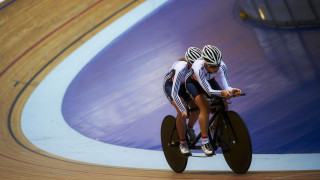The Great Britain Paracycling Team travel to Apeldoorn, Holland for the track world championships this week, on the road to Rio.
The final event in the track season is the chance for the squad to test themselves at the highest level before a long summer of training.
To determine eligibility to compete and to group athletes for competition, classifications based on their type of disability are determined by the UCI.
Classes
B/Vi for blind or visually impaired riders. B/Vi athletes are piloted on a tandem bike, by an able-bodied rider.
C for riders without a balancing impairment, where the loss or amputation of a limb where a prosthetic might (or might not) be used in replacement, or a significant limited use of a limb.
The classification has 5 categories relating generally to the location of the rider’s limb which is disabled. In very simple terms riders in the C5 classification have a disability of an upper limb, C4 is lower limb, and classifications C3 – C1 tend to be a combination of the two.
C classified riders will ride a solo bike which will often have modifications to accommodate the athlete.
Factoring
In events where cyclists from different classes compete against each other, a process called factoring is used in order to take into account the severity of the disabilities of each competitor.
The gold medal goes to the athlete with the fastest time after all the times have been factored.





